At the start of this week, we started our brainstorming process after meeting with our client last week.
According to the information given by the client, we figured out some basic principles we should have:
- Our app should be immersive for kids.
- Our app should be designed simple enough for kids to use.
- Our app should blend the screening questions naturally into the experience we are creating.
- The experience should be around 5 minutes to fit into the waiting time in pediatric primary care settings.
- We should use more graphic instead of word to express our ideas.
Based on the above principles, we brainstormed some ideas like storytelling and gamification, but not solid enough. How to blend questions into the experience and draw out players’ emotions while keeping it simple is the biggest challenge we met. Thus, we started to research how other games ask questions and express emotions. Here are some games that we researched:
Thomas Was Alone
In the game, the player controls one or more simple polygon shapes representing several out-of-control artificial intelligence entities, working with the shapes to get each to their individual end points on each level. Each shape is characterized with a unique name and personality. The simplicity and elegant use of color and shape give us a lot inspiration:
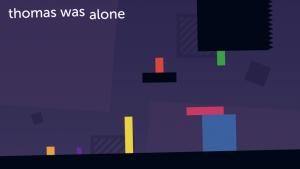
Until Dawn
Until Dawn is an interactive drama survival horror adventure video game. Each chapter is followed by a therapy session with a psychologist, who poses a question to his patient. These questions blend interactivity with intense cinematics to make player feel the fear.
Undertale
In Undertale, the player controls a human child as they navigate the fictional Underground. The inhabitants of the Underground are called “monsters”, a diverse and intelligent group who have been banished from the surface following a war with humanity. The child interacts with many monsters on their quest to return to the surface, with the player making decisions on whether to kill or befriend them. The monsters are pretty emotional, and the player will find their backstory while try to be friend with them. This game gave us a lot inspiration on how to tell a story in adventure game.
After the research, we brainstormed more and consolidated our ideas. We concluded 4 ideas from storytelling, adventure, daily life and gamification perspective. Here is the debrief of our ideas:
But we still had some questions like: what is the age range of the target audience, what is the survey content, could we rely on sound or not and etc. Clarifying these questions would greatly help us to define our design.
Besides brainstorming, we researched on how to design for kids on mobile platforms, here are some principles we conclude:
- Use big and round objects or text.
- Tasks should be simple.
- Challenge and reward. Keeps interest levels up.
- Animation and sound are liked.
- Young users reacted negatively to content designed for kids that were even one school grade below or above their own level.
This week, we also work on branding.
For our logo, we chose to use the image of an edelweiss with art-deco font. We chose the name edelweiss because it is a mountain flower growing in high, rocky places, and stands up against harsh weather conditions. It means courage and survival, which also represents our hope that traumatized children will stand up against their past and overcome it.




For ½ sheet and poster, we brainstormed several ideas as below:
Dark shadow inside the kid
Kids standing on giant edelweiss
Edelweiss-like umbrella protecting the kid
Shining edelweiss on the cliff against the dark
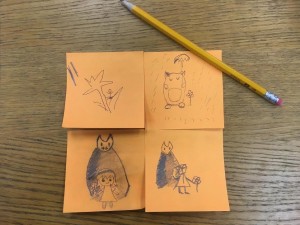
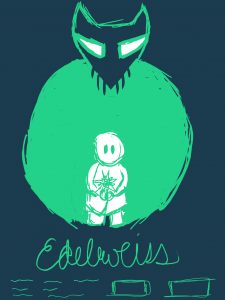
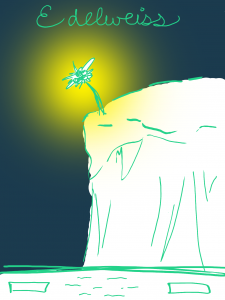
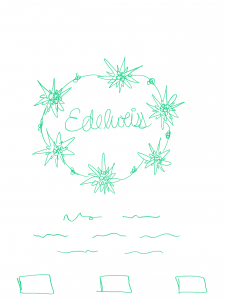
We finally settled on the edelweiss-like umbrella, representing our project goal to screen children for risk factors associated with past trauma.
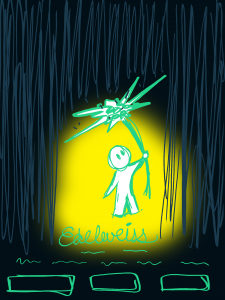
On Friday, we went to Allegheny Health Center and met with our client. There, we had a wonderful talk with the specialists on trauma. We clarified most of questions we had before: we are focusing on children ages 7-11, we know the format of the questions we will need to ask, and we can (and should) use sound to our advantage. We also presentenced our brainstorming ideas to our clients and they preferred the adventure game idea. After coming back from the meeting, we processed the information and split the tasks to every team member.
During the next week, we will move on to storytelling research and making prototypes.

